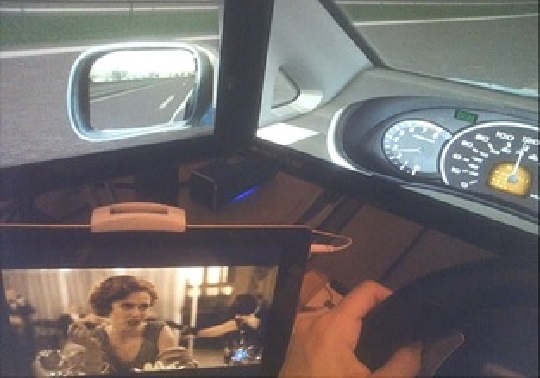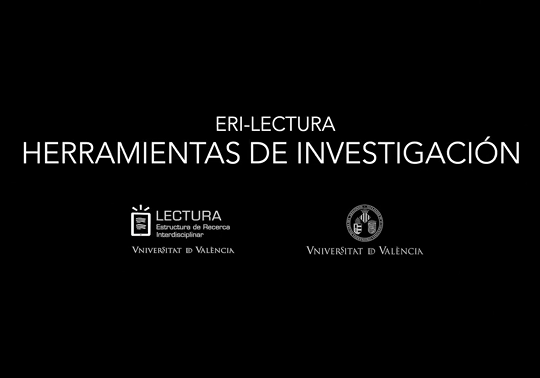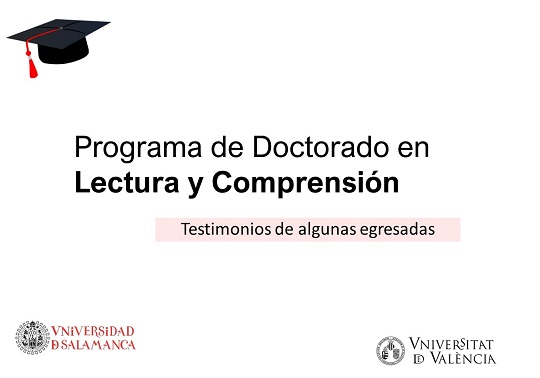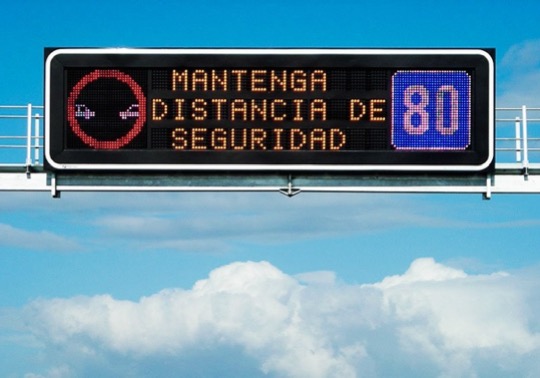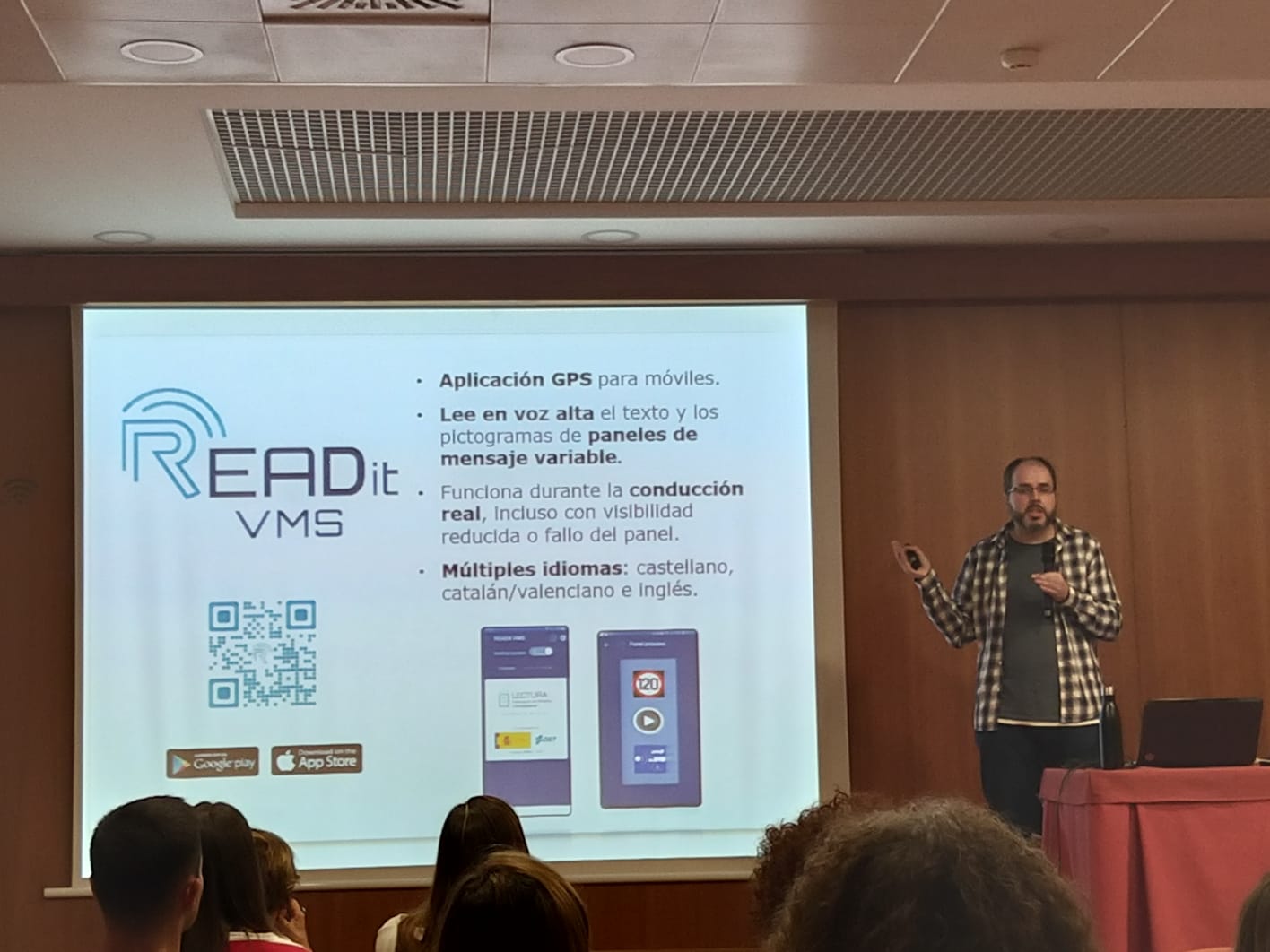
Abstract of the presentation made by Javier Roca at the "VII Jornadas ERI LECTURA: Research and Best Practice in Education" (Valencia, 18 - 19 October 2019)
4 november 2019
Reading is an omnipresent activity in our way of life. If we think that we only read when we enjoy a good book or when we use our tablet to search for information on the internet, we are reducing the importance of reading to a small share of its true reach.
Indeed, we also read when buying at the supermarket and the labels help us to decide which product to choose, going by bus and the words of advertisement capture our attention or whilst we are driving and making decisions from the text in traffic signs. Reading is undoubtedly our traveling companion in these and other everyday situations.
We might think that reading traffic signs is a simple task. However, there are many circumstances in which we may find it difficult to read the signs quickly and accurately while driving. For example, if there is fog or at night we will need some more time to be able to read the content clearly. In addition, if there is heavy traffic, our visual attention should be divided between reading traffic signals and monitoring the behaviour of other road users. Finally, for elderly people, drivers with visual problems or drivers with dyslexia, the task may require a greater effort or they will make more reading mistakes.
In the ERI-Lectura we have designed READit VMS, a mobile application that facilitates the content of variable message signs (VMS) while driving a vehicle (Figure 1). The application pinpoints the user by using GPS and then reads aloud the text and pictograms of the VMS while the driver approaches. Therefore, READit VMS allows to know in advance the VMS content, which is especially useful in situations such as the previous ones, that is, when driving circumstances are unfavourable (fog, night driving, heavy traffic...) or when the driver has trouble reading (an elderly person, a driver with visual problems or a driver with dyslexia). It also allows customizing the information (for example, you can adjust the reading distance or the language of the message, choosing between Spanish, Valencian or English).
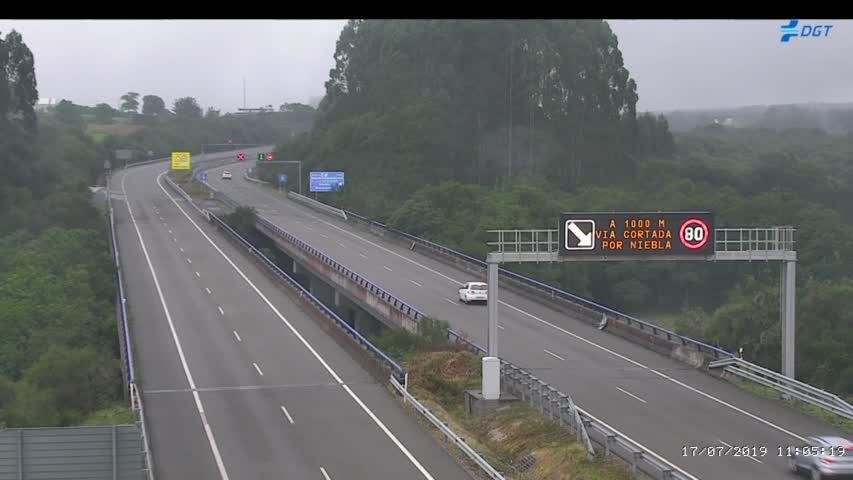
Figure 1: A variable message sign with three lines of text and two pictograms. READit VMS allows early access to the content of these types of messages through an audio message.
This application has been developed by the ERI-Lectura at the University of Valencia thanks to funding provided by the Directorate-General for Traffic (project SPIP2017-02132). The objective of the project was to evaluate the possible benefits of audio versions of variable message signs in drivers with and without dyslexia. The results of the study, obtained in an experiment with a driving simulator, show how complementary audio messages could be helpful during driving, given that (Figure 2):
- They would cancel the differences between drivers with and without dyslexia
- They allow accessing traffic information at greater distances
- They can reduce visual load and, therefore, increase the accuracy when responding to traffic messages and help maintain a greater distance from a leading vehicle
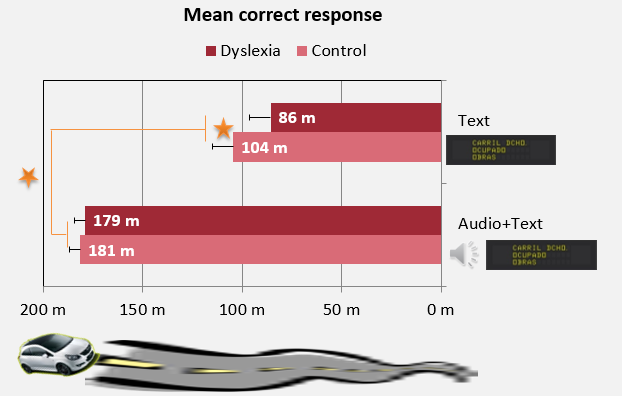
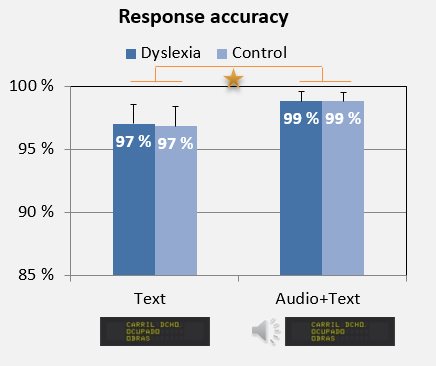 Figure 2: Average correct response distance and accuracy (percentage of correct responses) depending on the type of message (text vs. audio + text only) and the type of driver (dyslexia vs. control group). Results show how audio messages could benefit all drivers, also cancelling differences between drivers with and without dyslexia.
Figure 2: Average correct response distance and accuracy (percentage of correct responses) depending on the type of message (text vs. audio + text only) and the type of driver (dyslexia vs. control group). Results show how audio messages could benefit all drivers, also cancelling differences between drivers with and without dyslexia.
You will find more information about READit VMS and download the application here: https://go.uv.es/lectura/readitvms
Associated publication: Tejero, P., Pi-Ruano, M., & Roca, J. (2019). Benefits of audio versions of variable message signs in drivers with dyslexia. Manuscript submitted for publication.
With the partial funding of the Directorate-General for Traffic
(project SPIP2017-02132)

- Published by:
- Javier Roca Ruiz, Pilar Tejero Gimeno









